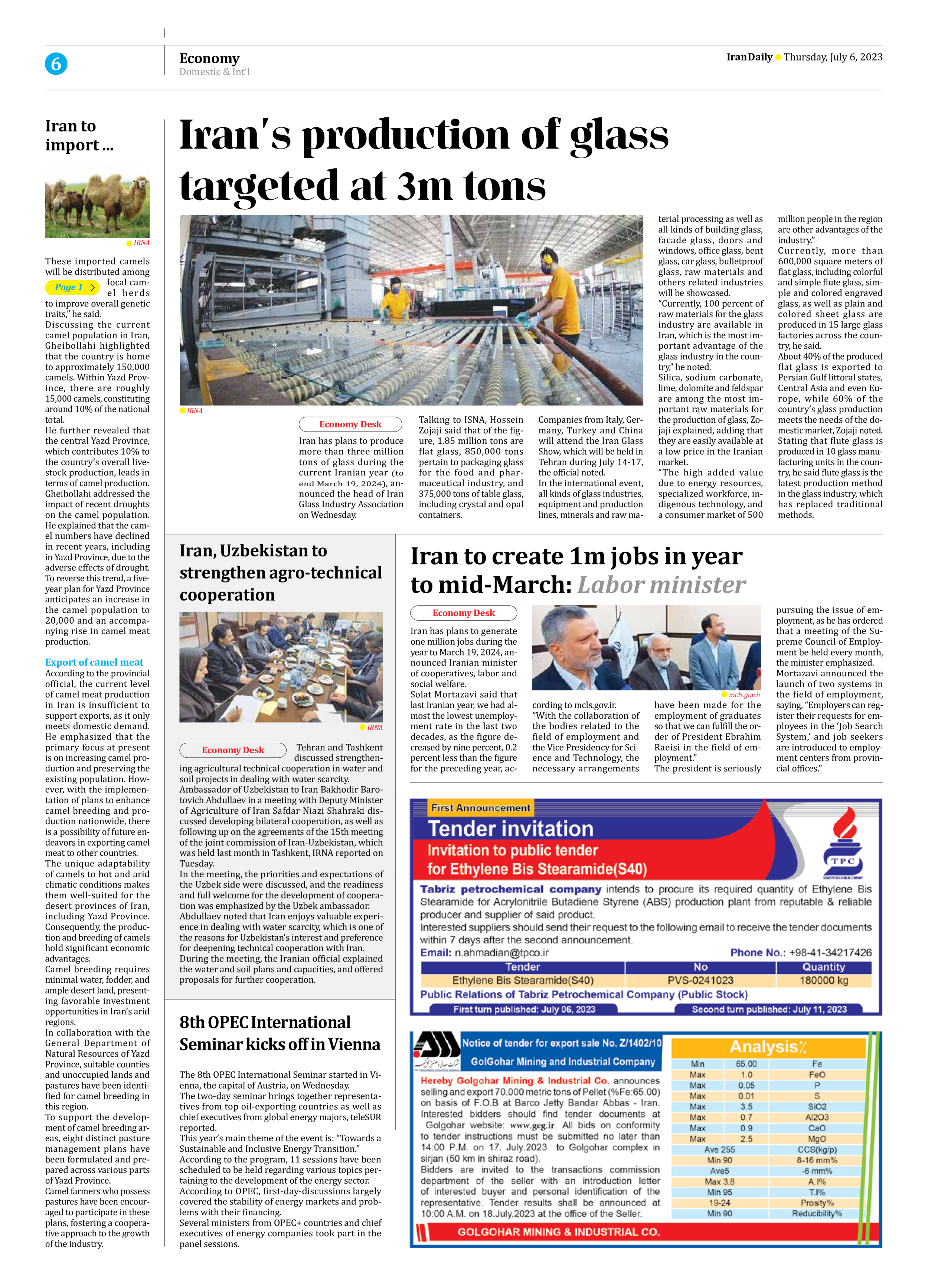
Iran’s production of glass targeted at 3m tons
Iran has plans to produce more than three million tons of glass during the current Iranian year (to end March 19, 2024), announced the head of Iran Glass Industry Association on Wednesday.
Talking to ISNA, Hossein Zojaji said that of the figure, 1.85 million tons are flat glass, 850,000 tons pertain to packaging glass for the food and pharmaceutical industry, and 375,000 tons of table glass, including crystal and opal containers.
Companies from Italy, Germany, Turkey and China will attend the Iran Glass Show, which will be held in Tehran during July 14-17, the official noted.
In the international event, all kinds of glass industries, equipment and production lines, minerals and raw material processing as well as all kinds of building glass, facade glass, doors and windows, office glass, bent glass, car glass, bulletproof glass, raw materials and others related industries will be showcased.
“Currently, 100 percent of raw materials for the glass industry are available in Iran, which is the most important advantage of the glass industry in the country,” he noted.
Silica, sodium carbonate, lime, dolomite and feldspar are among the most important raw materials for the production of glass, Zojaji explained, adding that they are easily available at a low price in the Iranian market.
“The high added value due to energy resources, specialized workforce, indigenous technology, and a consumer market of 500 million people in the region are other advantages of the industry.”
Currently, more than 600,000 square meters of flat glass, including colorful and simple flute glass, simple and colored engraved glass, as well as plain and colored sheet glass are produced in 15 large glass factories across the country, he said.
About 40% of the produced flat glass is exported to Persian Gulf littoral states, Central Asia and even Europe, while 60% of the country’s glass production meets the needs of the domestic market, Zojaji noted.
Stating that flute glass is produced in 10 glass manufacturing units in the country, he said flute glass is the latest production method in the glass industry, which has replaced traditional methods.







